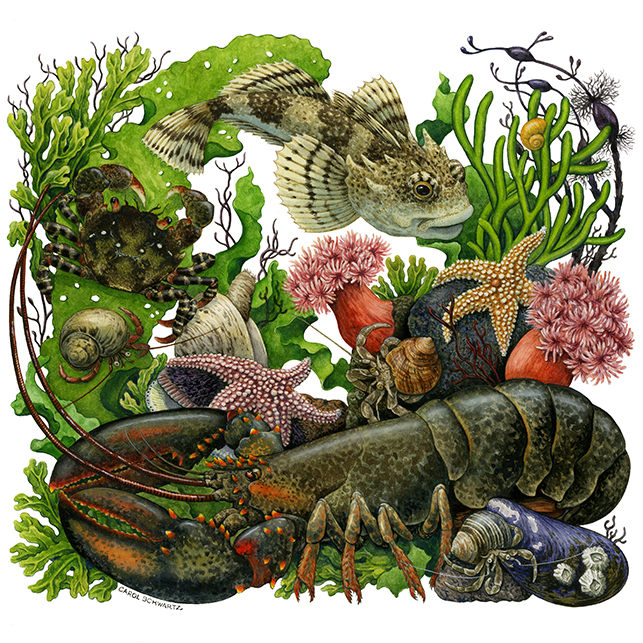- Apply
- Visit
- Request Info
- Give
Published on March 22, 2021
Carol Schwartz
“For me, precision means finding a strategy for creating a concept that brings the correct information and a little more, wonder and delight, to the illustration. Of course, composition, tonal values and color are important, too. Adding details that are precise and focused on the educational value establish the quality of a scientific illustration.”
“A keen sense of observation unites art and science as the first step in a process of discovery. Scientific and artistic methods have much in common; questioning what is seen, researching to increase one’s knowledge, experimenting to find answers or obtain results. The communication of scientific information can often be enhanced and more easily understood in a visual form that complements written hypotheses, theories or facts. Artists that are trained to be precise and focused on details can visualize and interpret science.
Scientific illustration and scientific art are broad terms. They include an array of fields in the physical and life sciences, as well as social sciences. Examples in this exhibition include art that faithfully documents informational, medical, botanical, zoological or historical topics. There are also artworks displayed that push the boundaries and expanding our thoughts about science. There are a range of styles and mediums displayed. Some styles are simple, others extremely Techniqueal and detailed. Traditional media like watercolor and pen & ink are represented, as well as digital art.
Art associated with science can range, like a sliding scale, from a high focus on science at one end to a high focus on art at the other, with a multitude of variations in between. Scientific illustration’s primary purpose is to convey information, as can be seen in infographics or simple black line drawings in textbooks. The most successful of these give our eyes a little more to linger on. Other scientific illustrations are designed to entice feelings and emotions, as well as to convey information. An example of this is artwork focused on enlightening minds or a call to action, as with extinction or climate change topics. Then there is beautiful scientific art, like a botanical painting, that conveys information but the information maybe somewhat secondary to its beauty.
My entry into the world of scientific illustration came gradually, without a clear path other than science and nature inspiring my art. As an illustrator, projects focused on the natural world for organizations like the National Geographic Society were the most satisfying. I gravitated to illustrating picture books and bringing my love of science to children in award-winning picture books. Working in nonfiction, I have learned how important research is to creating better informed art, as well as art that includes emotion. If I am passionate about a subject, my art is more appealing. My association with Shoals Marine Laboratory as an Artist in Residence for several years has allowed me to work with marine biologists and their students. Operated by Cornell University and the University of New Hampshire, the Appledore Island learning environment has expanded my understanding of how compatible art and science really are. Teaching brings my scientific illustration experiences to a whole new group of artists.
I carry on sharing best practices and techniques with my students, just as was done for me by educators like Murray Tinkelman, the director of my graduate program. He, too, is represented in this exhibition. The artists that take on the challenge of creating work that depends on accuracy and precision help us better understand complicated concepts and identify our world. They create a kind of magic where the mind and the heart meet. The two disciplines of art and science, which as first glance seem far apart, actually have a lot in common, and where they meet is so very satisfying.” Carol Schwartz, adjunct faculty Art and Art History Department, Eastern Connecticut State University


